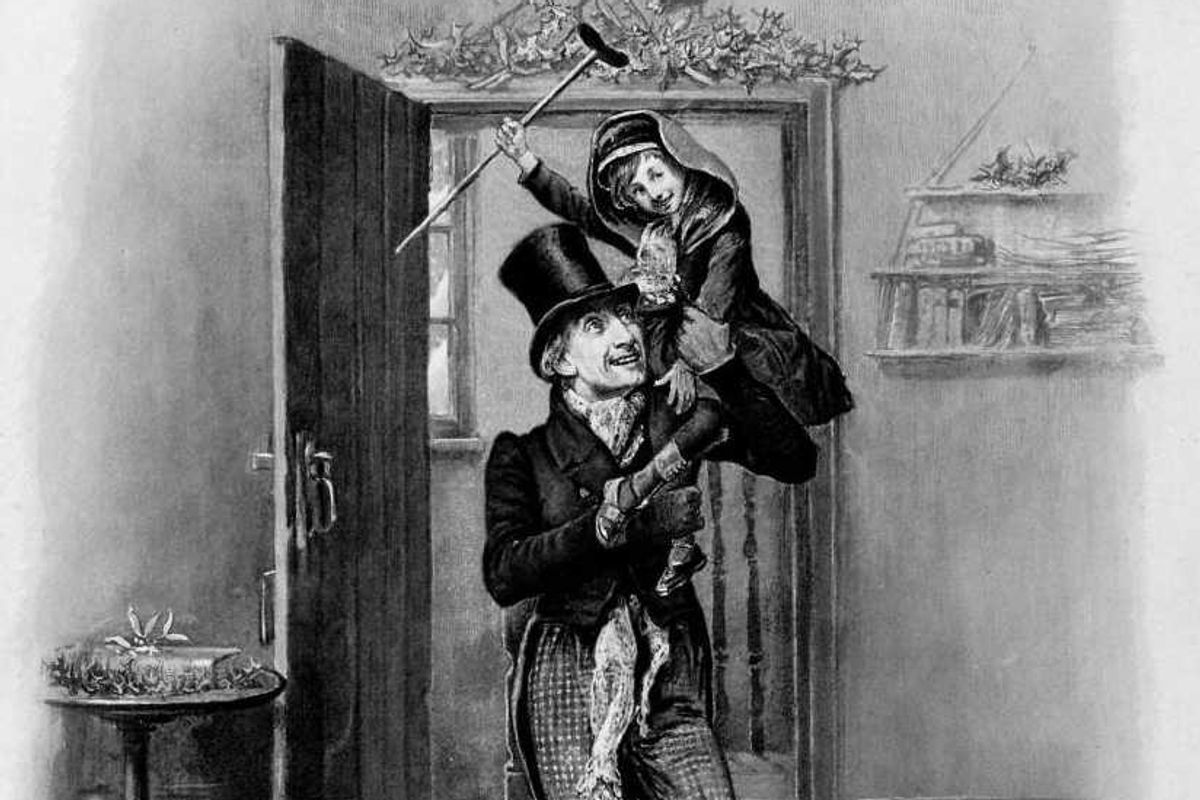Doctor has compelling theory as to what exactly is wrong with Tiny Tim in 'A Christmas Carol'
What kind of illness can be cured by a really big turkey??
Tiny Tim in A Muppet Christmas Carol
There are a few things that distinguish A Christmas Carol’s Tiny Tim Cratchit. One, his “God bless us, everyone” line, first said at the family dinner, and then repeated as the story's final line to solidify Scrooge's transformation towards goodwill. And second, the inexplicable fatal illness that caused him to walk with a crutch and have "his limbs supported by an iron frame."
But what exactly was wrong with Tiny Tim that left him so frail and needing crutches? And furthermore, as comedian Alex Falcone pointed out, how could all that be “instantly cured by a really big turkey?”
In a fun video posted to his Instagram, Falcone revealed that in 2012, pediatric neurologist and prolific medical writer, Dr. Russell Chesney examined every theory proposed about this in a paper titled Environmental Factors in Tiny Tim's Near-Fatal Illness, and came up with a clear winner.

The paper explains how in 1800s London, polluted air and lack of nutrition and sunshine gave 60% of children rickets, a disease which causes bone deformities and stunted growth. Nearly 50% also had signs of tuberculosis, and Chesney posited that a combination of the two likely gave Tim his crippling ailment.
Since malnutrition exacerbates both rickets and tuberculosis, it also stands to reason that the nutrient-rich turkey also healed him. In a fictional story, at least.
“And now, all he’ll have to deal with the rest of his life is whatever terrible things happen on the inside of an aging frog-pig hybrid,” Falcone quipped, referencing The Muppet Christmas Carol, aka the best version of A Christmas Carol ever.
Watch:
This inspired a few delightfully pun-derful comments:
“I always assumed he had a bad case of the Ribbets”
“+/- Swine Flu? 🐽 🤧”
“or tuporkulosis?”
Many have argued that Tiny Tim and his illness are more rhetorical devices (symbolizing the uncorrupted spirit of Christmas, wealth inequality and social responsibility, etc.) than something based in fact. However, in his paper Chesney also noted that Dickens had a reputation for incredibly accurate depictions of medical conditions in many of his characters, and even earned the nickname of “syndrome spotter.” Plus Chesney attested that Dickens “most assuredly” would be aware of rickets and tuberculosis, considering he wrote about them in a published daily journal.
Either way you slice it, it gives a whole new level of appreciation to be had for Charles Dickens. Now go watch The Muppet Christmas Carol, and have a great night.
